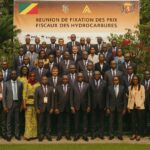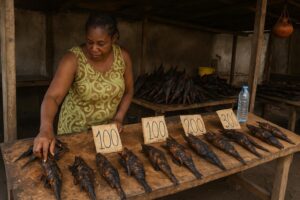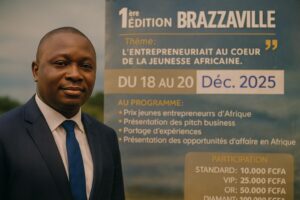Macroeconomic indicators hint at a turn
The second 2025 session of the National Economic and Financial Committee convened in Brazzaville framed the national narrative in terms of ‘guarded confidence’. Finance Minister Christian Yoka, who presided over the closed-door deliberations, reported that real GDP expanded by 1.5 percent in 2024 and is projected by the Bank of Central African States to edge up to 1.8 percent in 2025. The headline numbers may appear modest, yet they mark a decisive departure from the sub-par performance that characterised the immediate post-pandemic biennium, when hydrocarbon volatility and supply-chain stress dented domestic momentum (BEAC 2025).
Oil momentum and diversified sectors drive growth
Upstream capital expenditure by deep-offshore operators, buoyed by a relatively stable Brent corridor, remains the principal locomotive of the rebound. However, the Committee underscored that roughly a third of first-quarter value added emanated from non-oil activities—telecoms, agro-processing and construction—signalling the early fruits of sectoral diversification enshrined in the National Development Plan. An appreciable primary budget surplus has emerged, while broad money expanded sufficiently to lubricate private-sector transactions, without tipping liquidity into excess. According to an official present at the meeting, ‘the arithmetic of convergence is slowly becoming visible to the naked eye’, a turn of phrase reflecting both optimism and the recognition that new output must transcend the volatile hydrocarbons envelope.
Inflationary clouds and energy bottlenecks
Price dynamics inject a note of caution. Consumer inflation, anticipated at 3.5 percent in 2025, breaches the CEMAC convergence threshold. The Committee attributes the drift mainly to pricier imported staples and intermittent electricity supply following drought-exacerbated hydro power shortfalls. Analysts at the IMF’s April Regional Outlook warn that small states with concentrated import baskets are particularly sensitive to such shocks (IMF 2025). In response, the Ministry of Energy is fast-tracking modular gas-to-power schemes intended to stabilise grids and curb pass-through effects. Whether these interventions will tame headline inflation before the year’s final quarter remains a decisive variable for real-income sentiment.
Bank credit and sovereign debt market signals
The financial system’s pulse appears steadier. Commercial bank credit to the economy rose 3.3 percent year-on-year to CFA 1.647 trillion, while non-performing loans dipped to 274.2 billion, a marginal yet symbolically important contraction. The sovereign treasury-bill curve tells a more nuanced story: issuance needs contracted by 22.37 percent, although the stock outstanding climbed nearly 7 percent to CFA 2.528 trillion as maturities lengthened. Portfolio managers in Douala and Libreville interpret the pattern as a calibrated retreat from expensive short-term paper toward longer tenors designed to smooth cash-flow profiles. Minister Yoka described the new dialogue platform between the Treasury and its primary dealers as ‘a hinge mechanism that promises deeper, more predictable funding avenues for public priorities’.
Regional fiscal coordination under CEMAC aegis
Beyond domestic dashboards, Brazzaville’s fiscal compass is increasingly guided by communitarian rule-making. At June’s Libreville conclave of CEMAC treasuries, delegations adopted practical measures to digitalise revenue collection, broaden the tax base and operationalise the single Treasury account—an architecture championed by President Denis Sassou Nguesso since the 2021 reforms. The concerted approach aims to insulate the sub-region from exogenous shocks while nurturing investor confidence in the communal debt market (CEMAC 2025). A senior BEAC official contends that ‘fiscal mutualisation multiplies credibility’, pointing to tighter spreads on recent Congo-issued notes as anecdotal evidence.
Balancing optimism with prudent stewardship
Brazzaville’s policymakers are keenly aware that macro upswings can prove evanescent without institutional ballast. The Committee therefore reiterated its commitment to transparent procurement, gradual subsidy rationalisation and accelerated migration of informal enterprises into the tax net. International observers—including the World Bank’s governance unit—have applauded incremental gains in budgetary disclosure while cautioning against reform fatigue (World Bank 2024). Minister Yoka, in an exchange with diplomats after the session, conceded that ‘the distance between resilience and complacency is perilously short; our task is to stay on the right side of that line’.
Whether the blend of hydrocarbon leverage, monetary vigilance and regional cooperation will culminate in the robust, inclusive growth envisioned by the National Development Plan is the question animating boardrooms from Pointe-Noire to Paris. For the moment, Congo-Brazzaville can plausibly claim a nascent upside trajectory—one that calls not for exuberance, but for the methodical patience that long-horizon development invariably requires.




















